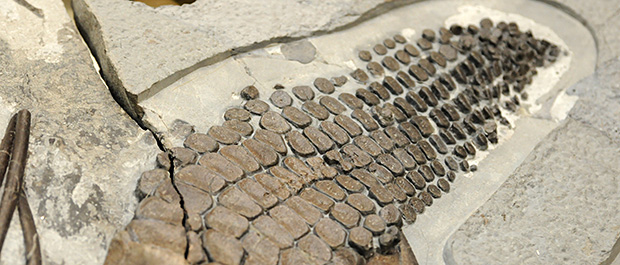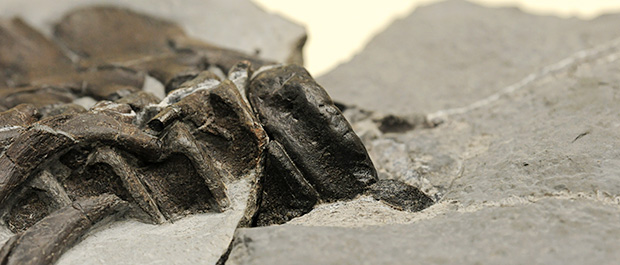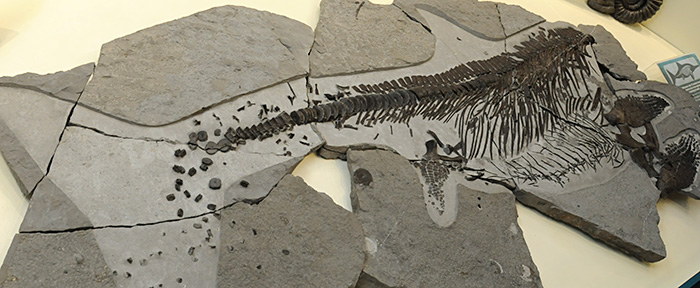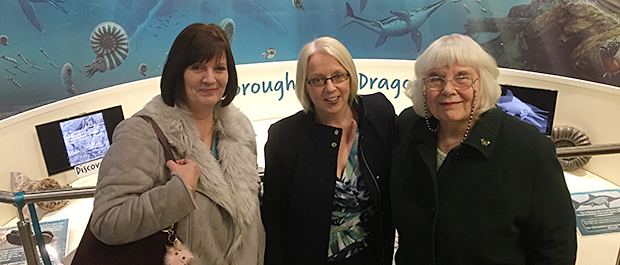Ichthyosaurs were a group of aquatic reptiles that existed around the time of the dinosaurs. They looked similar to dolphins but are not related to them.
Moore found a part of the front paddles of the ichthyosaur on Monmouth beach near Lyme Regis after a large block of limestone fell onto the beach in the winter storms of January 2016.

After cleaning up the find he knew it was special and that more bones probably lay in the cliffs.
With permission from the land owners, a team excavated the rocks to try and find the rest of the fossil before it was lost to erosion the following winter.
Luckily, more of the ichthyosaur was found.
Moore said: “It’s always exciting to find a fossil no matter what it is but when you suddenly see a cross section through some huge paddles of an ichthyosaur then it’s like wow and after a lot of hard work hammering the pieces out, getting them back to the workshop and preparing them and then realising that they’re something you’ve never seen before the size, the complexity and thinking well this might be something new completely that nobody’s ever seen, then your excitement just mounts.”
The heavy slabs were taken back to Moore’s workshop on a floating pontoon and prepared, the fine details being uncovered by small vibrating chisels.
The fossil turned out to be remarkable and it led to a 200 million year old murder-mystery.
What was unknown was why the animal had died, but it had obviously been murdered. It had several bite marks on its skeleton showing that the 4m long ichthyosaur had been killed by a much larger animal. It’s death had been traumatic and it had been decapitated in the process. Only something huge with a massive bite force could have done this.

Attenborough turned detective to explore the prime suspect, the terrifying temnodontosaurus – a large type of ichthyosaur.
Apart from serving up a murder-mystery, the find also advanced scientific knowledge.
The fossils were so well-preserved that they had skin. Analysis of it changed the way scientists think ichthyosaurs might have looked. The skin samples showed a darker top to the body and a much lighter underside, known as countershading. It’s common in marine animals such as sharks and is used to help camouflage them.

The fossils went on public display at Charmouth Heritage Coast Centre from 14 January 2018.
At the private launch event Sir David Attenborough said: “Congratulations to this town for this splendid centre. It’s a monument, a reminder of what local effort can do without any financial help from other people and I’m so pleased that this fossil is here.”
As well as from 2017 visitor donations, the display was funded by the family of Shaun Jackson, in his memory. Shaun used to fossil hunt in Charmouth when he was younger with his family. Unfortunately Sean passed away, aged 28. His family wanted money to go to educational use in his name, and as he loved fossils, thought that donating to the Charmouth Heritage Coast Centre would be a fitting use. They then surprised the family with putting their donation toward the sea dragon display.

Photos
View photos of Attenborough’s Sea Dragon private view
Note
In winter months check opening times of the centre at charmouth.org.